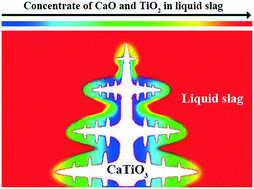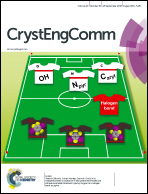Effect of basicity on the crystallization behavior of TiO2–CaO–SiO2 ternary system slag
Abstract
Titanium-bearing blast furnace slag contains a considerable amount of unused titanium and thus causes both resource waste and environmental pollution. The enrichment and extraction of titanium from titanium-bearing blast furnace slag is an urgent problem to be solved. In the present work, the crystallization behavior of TiO2–CaO–SiO2 ternary system slag was investigated both theoretically and experimentally in the binary basicity (CaO/SiO2 mass ratio) range from 1.0 to 1.4. Thermodynamic calculation indicated that perovskite (CaTiO3) and sphene (CaTiSiO5) were the two main titanium-containing phases and perovskite was the first precipitated phase during the cooling process. With the increase of basicity, the mass percentage of both perovskite and wollastonite (CaSiO3) increased while that of sphene decreased. The experimental results showed good agreement with the thermodynamic calculation. Also, it was found that the crystals appeared to have hexagonal, leaf vein and dendritic shapes macroscopically, and their size reached the centimeter level. Observation of the three-dimensional topography suggested that the perovskite phase existed as dendrite with the orthorhombic crystal, and the sphene grew by taking the perovskite crystal as its nucleus and then wrapping the perovskite crystals.



 Please wait while we load your content...
Please wait while we load your content...